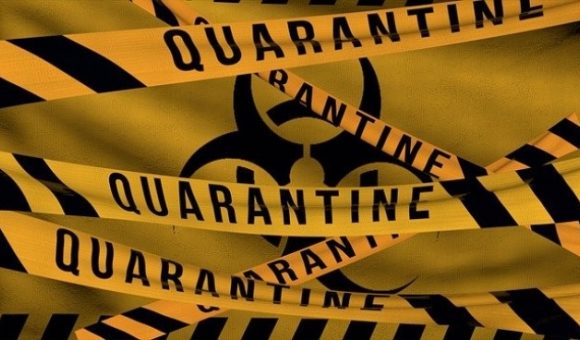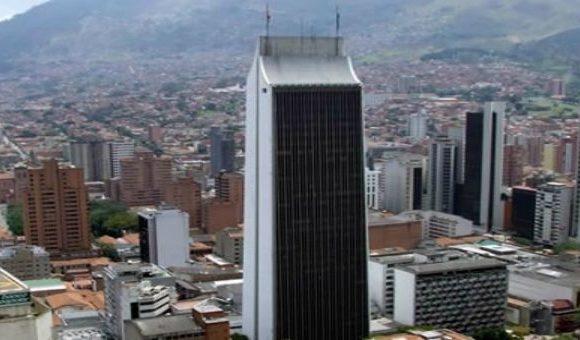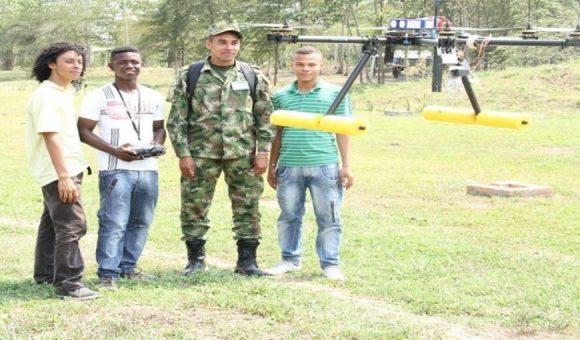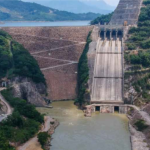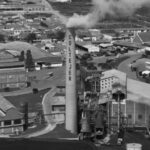Hidroituango Insurance-Adjuster’s Findings on Tunnel Collapse Similar to Skava Consulting’s Report to EPM — but Political Accusations Nevertheless Ensue
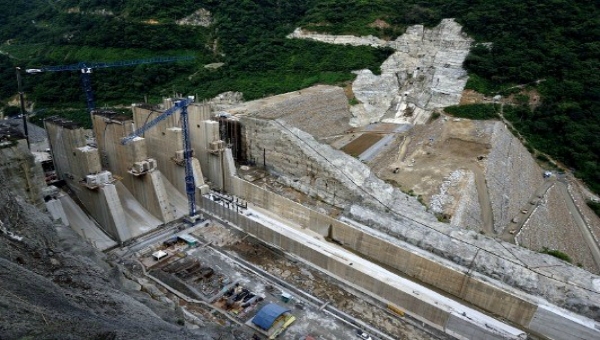
A just-released Hidroituango tunnel-collapse report for Mapfre Insurance’s UK-based reinsurance loss adjuster Advanta Global Services – publicly revealed today (September 7) via Medellin Mayor Daniel Quintero’s Twitter account – sparks renewed “corruption” and “cover-up” accusations brought by Mayor Quintero against former EPM directors and former Medellin Mayor Federico Gutierrez.
Ironically, the Advanta report –dated August 2, 2019, but only released now – arrives at mainly the same conclusions earlier found in Skava Consulting’s February 28, 2019 report to EPM (see Medellin Herald March 1, 2019, “EPM: Design Flaw Caused Hidroituango Tunnel Collapse”).
EPM publicly released the Skava report with similar findings to Advanta. So it’s unclear how Mayor Quintero can now claim that Mayor Gutierrez was “covering-up” some supposedly shocking Advanta report that supposedly was “suppressed” to avoid any lawsuit against Hidroituango contractors.
Both reports essentially conclude that collapse of the auxiliary diversion tunnel (ADT, or “GAD” in Spanish) was the combined result of extraordinary water-level changes in the Cauca River during April 2018, combined with insufficient sealing of the floor of the GAD tunnel, ultimately causing an estimated US$2.6 billion in losses — mainly resulting from nearly four years of lost power sales, plus hundreds of millions of dollars of physical damages.
Yet despite the relatively unsurprising conclusions in the Advanta report, Mayor Quintero is now claiming that former EPM directors and former Medellin Mayor Federico Gutierrez actually “hid” the Advanta report from Quintero and the new EPM management (all taking office in January 2020) because it supposedly justifies the new “conciliation” lawsuit brought by Quintero and new EPM general manager Alvaro Rendon against Hidroituango contractors and insurers.
Quintero claims that the prior EPM board – which resigned en-mass last month following Quintero’s failure consult with them on the risky “conciliation” lawsuit – either had “corrupt” ties to Hidroituango-involved companies or else to companies that have historically done business with EPM. Hence EPM’s former Board and management – along with former Mayor Gutierrez — supposedly put the financial interest of Hidroituango contractors and insurors over the interest of EPM in recovering losses resulting from the tunnel collapse.
One big problem with this argument: Neither the Advanta report nor the Skava report found that the supposedly defective design or construction of the GAD tunnel inevitably led to the tunnel collapse. Instead, both reports cite unusual Cauca River-flow fluctuations prior to the collapse — coincident with what’s now described (in hindsight) as GAD tunnel design and/or construction flaws.
This uncertainty factor – the lack of an inevitability finding — might help explain why Mapfre – having read both the Advanta and Skava reports earlier last year – nevertheless ultimately decided to pay EPM US$150 million for Hidroituango damages in December 2019, in what would be the first installment for a policy that covers up-to-US$2.55 billion in physical damages and up-to-US$628 million for lost power sales.
Below are all 10 conclusions of the “new” Advanta report that Mayor Quintero now claims was “hidden” from him and new EPM management — but which inexplicably hadn’t been publicly released by Quintero until now, eight months after he took office last January:
Advanta Report’s 10 Conclusions
“1. The various parties involved in the project had defined responsibilities as stated in contracts. The ‘Asesoria’ was responsible for the design process for the tunnels, the classification of the rock mass [adjacent to the dam] and the selection of the support [systems in the tunnels]. The ‘Interventoria’ was responsible for ensuring the project was built according to the contract.
“2. The project operated a risk management program at a high level but it did not comply with the Tunnel Code of Practice because it did not have lower level construction stage risk management and did not control events using a risk mitigation program.
“3. The design of the diversion tunnels was generally in accordance with the nominated codes, standards and normal industry practice. The observational method was a significant component of the design and construction process. Construction of the LDT [left diversion tunnel] and RDT [right diversion tunnel] followed the OM [Observational Method], for example the design was verified during construction using the convergence data. However, the OM was not correctly applied to the ADT [Auxiliary Diversion Tunnel], for example, the convergence was not measured soon enough to be used to verify the design and adjust the [tunnel integrity] support.
“4. The LDT and RDT were claimed to have functioned successfully during four years of operation, so the Asesoria used the experience and data from this and other tunnels to optimize the ADT support design. The ADT support was, however, lightened in comparison with the LDT and RDT such that it [the ADT] was vulnerable to a highly irregular shape, erosion and water pressure changes. Furthermore, the Aesoria’s analysis showed that the support had to be fully installed and working before the [tunnel excavation face] was advanced.
“5. The rock mass in the ADT was weaker around the shear zones than the design assumptions for Type-III ground and it was allowed to relax more than expected by the design because the [excavation] face was advanced before the grout was cured. Consequently, the excavated rock was not controlled by the support installed and the support was not enhanced to compensate for over-relaxation of the rock, such as use of active support to eliminate these weaknesses, as would have been done if the OM [Observational Method] had been implemented correctly as was done in the LDT and RDT. Furthermore, the steel mesh required for shear zones was not installed at the location of the collapse.
“6. Also, the tunnel was not built in accordance with the design, nor the technical specification because the thickness of the shot-crete was not measured by depth pins, the blast lengths were excessive at times and a concrete floor was not installed to protect weak rock and shear zones from erosion by flowing water.
“7. The tunnel showed clear signs of distress during construction because the Contractor made frequent use of additional support to advance the face (spiles), [despite] persistent overbreak, fallouts of rock and support from the crown and sidewalls, fissures and cracks in shot-crete. These signs of distress of the tunnel were not addressed by the Project as is required by the OM.
“8. The parties advising EPM (Asesoria and Inventoria) and together with the Contractor were aware of where the work did not follow the design, where the construction did not produce the tunnel with the expected shape and support and where the tunnel collapsed during construction. Many of these issues were not remedied because those parties did not agree on the cause or whose responsibility it was to resolve them.
“9. The support installed in the ADT was degraded by turbulent [Cauca River water] flow because it had a highly irregular shape and the floor was eroded because it did not have a concrete cover, which undermined the support from the start of the [water-diversion] operation. The parties had a critical divergence on cause of damage of the rock mass beyond the design assumptions in that the Asesoria considered the damage was ‘poor blasting’ and the Contractor considered it to be ‘pre-existing poor rock.’ This and other matters were not resolved and the ADT was put into service with these vulnerabilities.
“10. A flood event from April 1 to April 16 [2018] increased the pressure of the [Cauca River] water in the rock mass of the shear zone at about kilometer 0+540 by about 50 meters equivalent head over invert level. On or about April 13, 2019, was the peak river level and these vulnerabilities manifested when the groundwater pressurized leading to an imbalance with the water pressure in the tunnel. The river level then dropped faster than the water could drain from the ground [around the tunnel] such that the pressure on the outside of the tunnel was greater than inside the tunnel, overloading the existing support, causing it to fail, leading to fallout of key blocks of rock. This process of fallout of blocks and overloading of remaining support continued until there was a major collapse of the tunnel on April 28, 2018, that caused temporary blockage of the tunnel at around chainage kilometer 0+540, that was breached on April 29, 2019, followed by a final major collapse that completely blocked the tunnel at kilometer 0+520 and progressed to the surface on April 30, 2018” — which ultimately forced EPM to decide to divert the Cauca River through the machine room to avoid catastrophic dam collapse.

